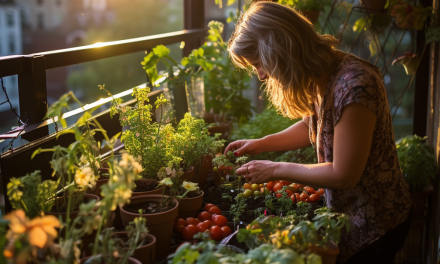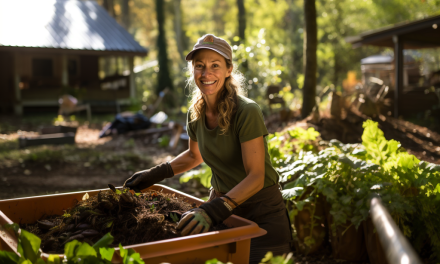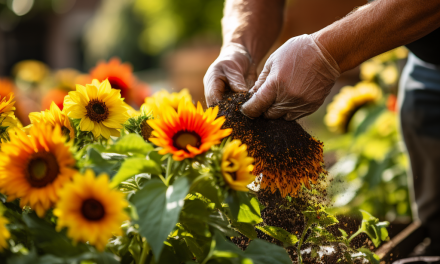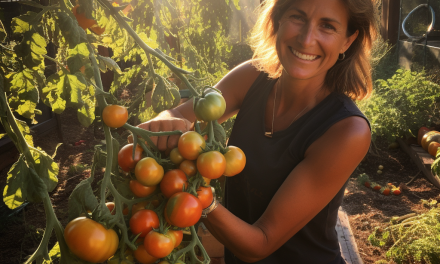In today’s unpredictable world, cultivating a survival garden is not merely an option; it’s a step toward self-reliance and sustainability. As uncertainty looms, the notion of securing your own food source and creating a green sanctuary within your home becomes increasingly appealing.
Survival Gardens, often overlooked gems in the realm of gardening, hold the key to both sustenance and solace. They are more than just patches of earth; they are insurance policies against food shortages, a testament to human resilience, and a source of boundless beauty. In this comprehensive guide, we embark on a journey to uncover the secrets of crafting your very own survival garden.
The Essence of Survival Gardens
Survival gardens are not a recent phenomenon; they have roots deep in human history. During times of war, economic instability, or other crises, people turned to their gardens as a lifeline. Victory Gardens during World War II, for instance, served as a source of sustenance and national pride.
Today, survival gardens offer more than just sustenance; they provide a sense of security and autonomy. They empower you to take control of your food supply and reduce your reliance on external sources. Whether you have acres of land or just a few square feet on your balcony, you can cultivate a survival garden that suits your space and needs.
In this article, we’ll explore every facet of survival gardens, from selecting the perfect location to choosing resilient crops, managing water efficiently, addressing pests naturally, and building resilience into your garden. We’ll also delve into harvesting and preserving your produce, ensuring that the fruits of your labor continue to nourish you throughout the year.
Are you ready to unlock the secrets of survival gardening and create your green oasis? Let’s get started by understanding the importance of selecting the perfect location for your survival garden.
Selecting the Perfect Location
Image: A close-up shot of soil being tested with a pH meter or a handful of soil being examined for texture.
The success of your survival garden begins with choosing the ideal location. Your plants will thrive when they receive the right amount of sunlight, have access to good soil, and are shielded from adverse conditions. Let’s dive into the crucial aspects of selecting the perfect location for your survival garden.
The Importance of Sunlight and Soil Quality
Sunlight: Sunlight is the lifeblood of plants. Most vegetables and herbs require at least 6-8 hours of direct sunlight per day to grow optimally. When scouting for a location, observe how sunlight moves across your outdoor space throughout the day. Look for spots that receive ample sunlight, avoiding areas shaded by tall structures or trees.
Soil Quality: Soil is the foundation of your garden. Test your soil’s pH level to ensure it falls within the optimal range for the crops you plan to grow. Additionally, assess the soil’s texture; well-draining soil is essential for healthy plant roots. You can perform a simple soil texture test by taking a handful of soil and squeezing it. Sandy soil will crumble, loamy soil will hold its shape but crumble easily, and clay soil will form a dense ball. Amend your soil as needed to improve its texture and fertility.
Choosing an Ideal Garden Spot
Once you’ve evaluated sunlight and soil quality, consider the following factors when selecting your garden spot:
Proximity: Choose a location close to your home, so you can easily access and care for your garden. Having it nearby encourages regular attention and maintenance.
Water Source: Ensure that a water source, such as a hose or watering can, is readily available to keep your plants hydrated.
Protection: If possible, position your garden where it’s shielded from strong winds, which can damage plants and accelerate water evaporation.
Space: Assess the available space and plan your garden layout accordingly. Whether you have a spacious backyard or a small balcony, there are creative ways to maximize your growing area.
Containers: If you have limited space or poor soil quality, consider container gardening. This allows you to grow plants on a patio, balcony, or any suitable surface, providing you with more control over soil quality and drainage.
By carefully selecting the perfect location for your survival garden, you lay the foundation for a thriving and resilient garden. In the next section, we’ll dive into the essential crops for survival and how to cultivate them effectively.
Essential Crops for Survival
Image: A variety of resilient, high-yield crops thriving in a well-tended garden bed.
Now that you’ve chosen the perfect location for your survival garden, it’s time to dive into the heart of your green oasis—the crops you’ll cultivate for sustenance. Selecting the right crops is paramount for a successful survival garden. Let’s explore the essential crops and how to cultivate them effectively.
Resilient, High-Yield Crops
When it comes to survival gardens, focus on crops that are hardy, high-yielding, and nutritionally dense. Here are some staples to consider:
Potatoes: Potatoes are a reliable source of carbohydrates and can be stored for extended periods. Plant them in well-drained soil and hill them as they grow.
Leafy Greens: Varieties like kale, Swiss chard, and spinach are rich in vitamins and can be harvested continuously.
Tomatoes: These versatile fruits are a kitchen staple. Choose disease-resistant varieties for best results.
Beans: Bush or pole beans are excellent for protein and fiber. They’re easy to grow and can be preserved through canning or drying.
Carrots: Carrots are packed with vitamins and can be stored in the ground over winter or canned for long-term use.
Peppers: Bell peppers and chili peppers add flavor and vitamins to your diet. They can be dried or frozen for preservation.
Herbs: Grow a variety of herbs like basil, oregano, and thyme for flavor and medicinal purposes.
Onions: Onions are a kitchen essential and have a long shelf life when stored properly.
Cabbage: Cabbage is rich in nutrients and can be fermented into sauerkraut for preservation.
Squash: Varieties like zucchini and butternut squash are prolific and store well.
Crop Rotation for Sustainability
To maintain the health and productivity of your garden, practice crop rotation. This involves changing the location of crops from year to year to reduce the risk of soil-borne diseases and pests. Plan your garden layout with this in mind, and consider companion planting to naturally deter pests and improve soil fertility.
The Role of Herbs and Medicinal Plants
Don’t forget to include herbs and medicinal plants in your survival garden. These not only enhance the flavors of your dishes but also provide valuable remedies. Herbs like mint, lavender, and chamomile have medicinal properties and can be used for teas, salves, and more.
By choosing the right crops and understanding how to cultivate them effectively, you’ll be well on your way to creating a self-sustaining source of food in your survival garden. In the next section, we’ll explore the crucial topic of water management to ensure your plants thrive even in challenging conditions.
Water Management
Image: A rain barrel collecting rainwater from a rooftop gutter.
Effective water management is a cornerstone of a successful survival garden. In this section, we’ll explore the importance of water conservation and strategies to ensure your plants thrive even in challenging conditions.
The Significance of Efficient Water Usage
Water is a precious resource, and in times of crisis, access to a reliable water source may be limited. Therefore, it’s crucial to use water efficiently in your survival garden. Here’s how you can do it:
1. Mulching: Apply a layer of organic mulch around your plants to retain moisture, reduce evaporation, and suppress weeds.
2. Drip Irrigation: Consider installing a drip irrigation system to deliver water directly to the root zones of your plants, minimizing wastage.
3. Rain Barrels: Collect rainwater from your rooftop gutters in rain barrels. This harvested rainwater can be used to supplement your garden’s water supply during dry periods.
4. Soil Improvement: Amend your soil with organic matter to enhance its water-holding capacity. Well-structured soil retains moisture more effectively.
5. Watering Timing: Water your garden during the early morning or late afternoon to reduce water loss due to evaporation.
Rainwater Harvesting and Irrigation Methods
Rainwater Harvesting: Install rain barrels or a rainwater harvesting system to capture rainwater from your roof. This harvested water is an excellent source for irrigating your survival garden during dry spells. Be sure to use a fine mesh screen to filter out debris and keep the water clean.
Drip Irrigation: Drip irrigation is a highly efficient method of delivering water directly to the roots of your plants. It conserves water by minimizing surface evaporation and reducing the risk of foliar diseases. Consider using a timer to automate your drip system for consistent watering.
Soaker Hoses: Soaker hoses are another effective way to water your garden. These hoses have small perforations that allow water to seep out slowly, providing a deep, even soak to the root zones of your plants.
Addressing Drought-Resistant Plants
Incorporating drought-resistant plants into your survival garden can help you conserve water. These plants have adapted to arid conditions and require less frequent watering. Some examples include:
- Lavender
- Sage
- Rosemary
- Succulents
By strategically planting drought-resistant varieties, you can maintain a lush and thriving garden while minimizing water usage.
Pest Control and Natural Solutions
Image: A garden scene with ladybugs and bees on plants, illustrating beneficial insects at work.
Maintaining a healthy and thriving survival garden involves effective pest control. In this section, we’ll discuss common garden pests and how to address them using natural solutions to keep your crops bountiful.
Common Garden Pests and Potential Threats
Aphids: These tiny, sap-sucking insects can quickly multiply and damage your plants by stunting growth and spreading diseases.
Slugs and Snails: These mollusks can devour your tender seedlings and young plants, leaving holes and slime trails in their wake.
Caterpillars: Various caterpillar species, like the cabbage worm, can chew through your leafy greens and vegetables.
Deer and Other Wildlife: Larger pests like deer, rabbits, and groundhogs can decimate your garden overnight.
Disease: Fungal and bacterial diseases can affect your plants’ health, leading to wilting, yellowing leaves, and reduced yields.
Natural Pest Control Methods
Beneficial Insects: Encourage beneficial insects like ladybugs, lacewings, and bees to your garden. These insects prey on common garden pests, helping to keep their populations in check.
Companion Planting: Planting certain crops together can deter pests. For example, marigolds can help repel nematodes, and basil can discourage aphids.
Neem Oil: Neem oil is a natural insecticide and fungicide that can help control a variety of pests and diseases. Dilute it with water and apply it to affected plants.
Handpicking: For larger pests like slugs and caterpillars, handpick them off your plants and relocate them away from your garden.
Fencing: Use fencing or netting to protect your garden from larger wildlife like deer. Electric fencing can be particularly effective.
Organic Sprays: Create homemade sprays using ingredients like garlic, onion, and chili peppers to deter pests. These sprays are safe for your plants and the environment.
Remember, maintaining a diverse and healthy garden ecosystem is key to natural pest control. Avoid using harsh chemical pesticides that can harm beneficial insects and have long-lasting environmental effects.
Sustainability and Composting
Image: A compost bin filled with organic matter in various stages of decomposition.
Sustainability is at the core of survival gardening. In this section, we’ll explore eco-friendly practices, with a focus on composting, to nurture your garden and reduce waste.
Promoting Eco-Friendly Gardening
Survival gardens not only provide sustenance but also offer an opportunity to contribute positively to the environment. Here are some eco-friendly practices to embrace:
1. Avoid Chemicals: Steer clear of synthetic fertilizers and pesticides that can harm the environment and disrupt the balance of your garden ecosystem.
2. Save Seeds: Preserve and exchange seeds from year to year to maintain biodiversity and adaptability in your garden.
3. Reduce Waste: Minimize waste by using natural, biodegradable materials in your garden, such as wooden stakes and organic mulch.
4. Attract Pollinators: Cultivate a garden that welcomes pollinators like bees and butterflies, which are essential for fruit and vegetable production.
The Art of Composting
Composting is a cornerstone of sustainable gardening. It not only reduces kitchen and garden waste but also enriches your soil, improving its structure and fertility. Here’s how to get started:
1. Collect Organic Matter: Save kitchen scraps like fruit and vegetable peels, coffee grounds, and eggshells. In your garden, gather leaves, grass clippings, and small branches.
2. Build or Buy a Compost Bin: Choose a suitable composting container, whether it’s a homemade bin, a purchased composter, or a simple pile in your garden.
3. Layer Organic Material: Alternate between green (nitrogen-rich) and brown (carbon-rich) materials. Green materials include kitchen scraps and fresh yard waste, while brown materials consist of dried leaves, straw, and cardboard.
4. Maintain Moisture and Aeration: Keep your compost pile moist but not soggy. Turn it regularly to aerate the contents, which accelerates decomposition.
5. Harvest Compost: After several months to a year, your compost will be ready to use. It should have a rich, earthy smell and a dark color. Incorporate it into your garden soil to enhance fertility.
By composting, you not only reduce waste but also create nutrient-rich soil amendments for your survival garden. In the next section, we’ll explore the concept of building resilience in your garden through techniques like companion planting.
Sustainability and Composting
Image: A compost bin filled with organic matter in various stages of decomposition.
Sustainability is at the core of survival gardening. In this section, we’ll explore eco-friendly practices, with a focus on composting, to nurture your garden and reduce waste.
Promoting Eco-Friendly Gardening
Survival gardens not only provide sustenance but also offer an opportunity to contribute positively to the environment. Here are some eco-friendly practices to embrace:
1. Avoid Chemicals: Steer clear of synthetic fertilizers and pesticides that can harm the environment and disrupt the balance of your garden ecosystem.
2. Save Seeds: Preserve and exchange seeds from year to year to maintain biodiversity and adaptability in your garden.
3. Reduce Waste: Minimize waste by using natural, biodegradable materials in your garden, such as wooden stakes and organic mulch.
4. Attract Pollinators: Cultivate a garden that welcomes pollinators like bees and butterflies, which are essential for fruit and vegetable production.
The Art of Composting
Composting is a cornerstone of sustainable gardening. It not only reduces kitchen and garden waste but also enriches your soil, improving its structure and fertility. Here’s how to get started:
1. Collect Organic Matter: Save kitchen scraps like fruit and vegetable peels, coffee grounds, and eggshells. In your garden, gather leaves, grass clippings, and small branches.
2. Build or Buy a Compost Bin: Choose a suitable composting container, whether it’s a homemade bin, a purchased composter, or a simple pile in your garden.
3. Layer Organic Material: Alternate between green (nitrogen-rich) and brown (carbon-rich) materials. Green materials include kitchen scraps and fresh yard waste, while brown materials consist of dried leaves, straw, and cardboard.
4. Maintain Moisture and Aeration: Keep your compost pile moist but not soggy. Turn it regularly to aerate the contents, which accelerates decomposition.
5. Harvest Compost: After several months to a year, your compost will be ready to use. It should have a rich, earthy smell and a dark color. Incorporate it into your garden soil to enhance fertility.
By composting, you not only reduce waste but also create nutrient-rich soil amendments for your survival garden. In the next section, we’ll explore the concept of building resilience in your garden through techniques like companion planting.
Building Resilience in Your Garden
Image: A garden with a diverse array of plants, including vegetables, flowers, and herbs, interplanted to create biodiversity.
Resilience is the key to a thriving survival garden. In this section, we’ll explore strategies for building resilience through techniques like companion planting and embracing biodiversity.
The Power of Companion Planting
Companion planting is a gardening technique that involves planting different species of plants near each other to benefit one another. By harnessing the synergistic relationships between plants, you can improve the health and resilience of your garden. Here are some examples:
1. Pest Control: Some plants naturally repel pests or attract beneficial insects. For instance, planting marigolds alongside vegetables can deter nematodes, and including dill or fennel can attract predatory insects that feed on garden pests.
2. Improved Soil: Certain plants, like legumes (peas and beans), have the ability to fix nitrogen in the soil, benefiting neighboring plants with their nitrogen-rich root nodules.
3. Shade and Support: Taller plants can provide shade and support for shorter ones. For instance, planting corn alongside climbing beans allows the beans to use the cornstalks as natural trellises.
4. Complementary Growth: Pair plants with different growth habits. For example, interplanting leafy greens with root vegetables optimizes space and resources.
Embracing Biodiversity
Diverse gardens are inherently more resilient. By planting a variety of crops, you reduce the risk of a single pest or disease wiping out your entire harvest. Additionally, diverse gardens support a wider range of beneficial insects, creating a healthier ecosystem.
Consider incorporating the following elements to promote biodiversity in your survival garden:
1. Flowers: Plant flowers such as sunflowers, cosmos, and lavender to attract pollinators and beneficial insects.
2. Herbs: Herbs like basil, parsley, and cilantro not only enhance your culinary adventures but also support biodiversity.
3. Crop Rotation: Rotate crops each season to prevent the buildup of soil-borne diseases and pests.
4. Interplanting: Mix vegetables, herbs, and flowers within the same garden bed to create a harmonious and biodiverse environment.
By embracing companion planting and biodiversity, you can enhance the resilience of your survival garden, making it more capable of withstanding challenges and providing a consistent source of food.
Harvesting and Preserving
Image: A basket filled with freshly harvested vegetables from the garden.
As your survival garden flourishes, it’s essential to know when and how to harvest your crops to maximize their freshness and nutritional value. Additionally, learning methods of preserving your bounty ensures that your hard work continues to nourish you throughout the year.
The Art of Harvesting
Knowing the optimal time to harvest your crops is crucial. Here are some general guidelines:
1. Leafy Greens: Harvest leafy greens like lettuce and spinach when they reach a size suitable for your needs. Pick outer leaves first to encourage continued growth.
2. Root Vegetables: Gently pull root vegetables like carrots and radishes from the soil when they reach the desired size. Be careful not to damage the roots during harvest.
3. Tomatoes: Pick tomatoes when they have reached their mature color and have a slight give when squeezed.
4. Peppers: Harvest peppers when they have fully ripened to their intended color, whether green, red, or yellow.
5. Herbs: Harvest herbs like basil and cilantro by snipping leaves or branches, leaving the plant intact for regrowth.
Methods of Preservation
To extend the shelf life of your garden’s produce, consider these preservation methods:
1. Canning: Canning allows you to store fruits, vegetables, and sauces in jars. Properly sealed jars can last for years.
2. Freezing: Many vegetables and fruits can be blanched and frozen for long-term storage. Ensure proper packaging to prevent freezer burn.
3. Drying: Herbs, fruits, and some vegetables can be dried for later use. Use a dehydrator or air-dry them naturally.
4. Fermenting: Fermentation is an ancient preservation method that transforms vegetables like cabbage into sauerkraut and cucumbers into pickles.
5. Jams and Jellies: Make jams and jellies from fruits like berries to enjoy their flavor year-round.
By mastering the art of harvesting and preserving your garden’s bounty, you can savor the tastes of your survival garden even during the offseason. Whether you’re enjoying a fresh salad in summer or homemade tomato sauce in the heart of winter, the rewards of your hard work will continue to nourish you.
Conclusion
As we conclude this journey into the realm of survival gardens, you’ve gained insights into crafting a green oasis that’s not only beautiful but also resilient and self-sustaining. From selecting the perfect location to choosing the right crops, managing water efficiently, addressing pests naturally, and embracing sustainable practices, you’re now equipped with the knowledge to thrive in any circumstance.
Your survival garden is a testament to your self-reliance and a source of nourishment, beauty, and hope. Embrace this journey, and let your green oasis flourish, providing sustenance and solace in an uncertain world.

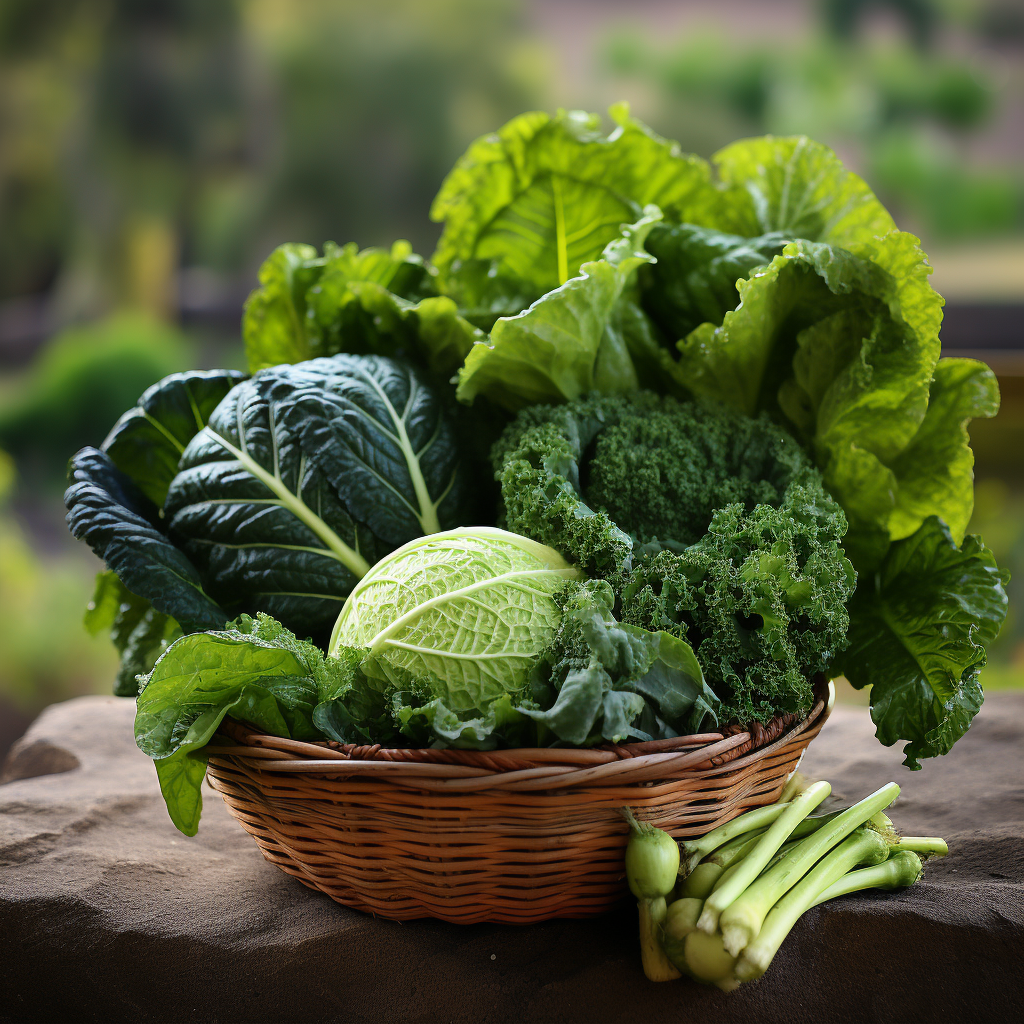
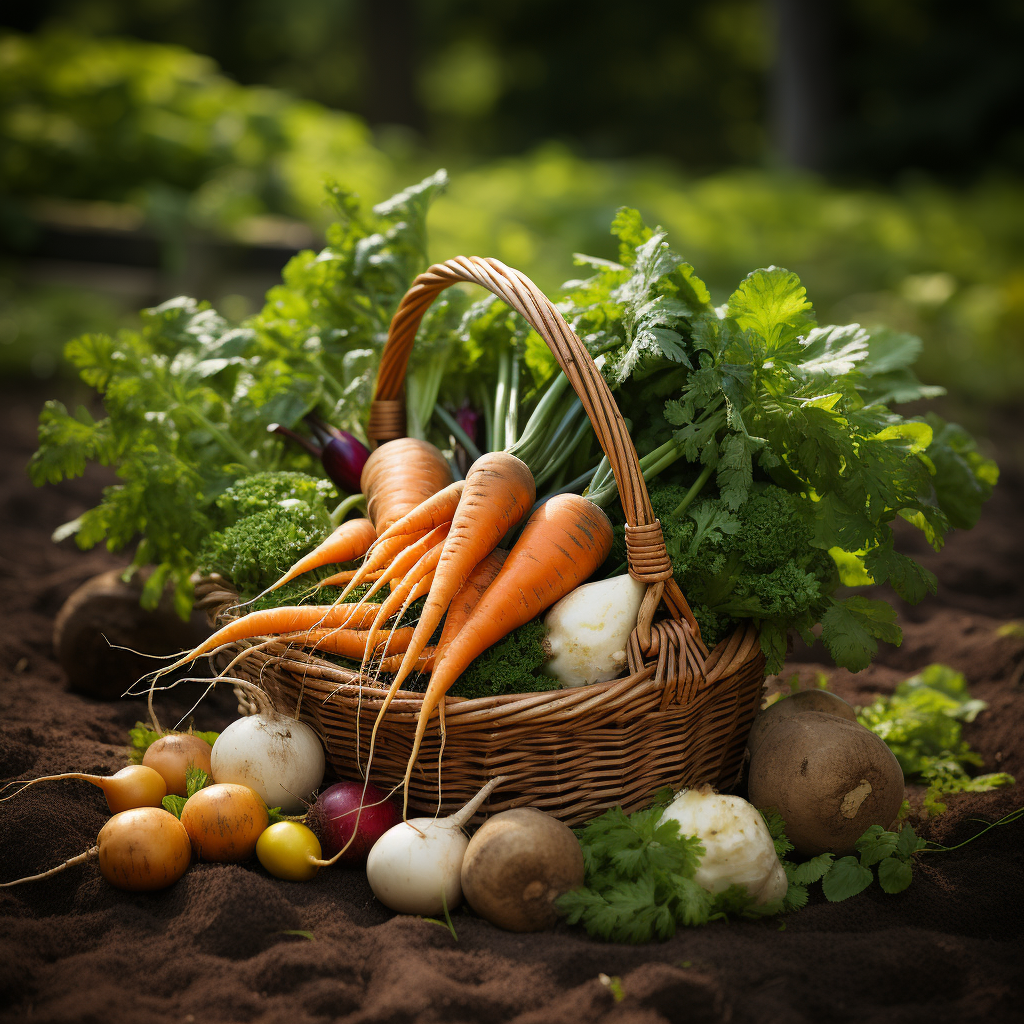


Amazon and the Amazon logo are trademarks of Amazon.com, Inc, or its affiliates.AMAZON AFFILIATE DISCLOSURE The Garden Whisperer Tips blog is a participant in the Amazon Services LLC Associates Program, an affiliate advertising program designed to provide a means for sites to earn advertising fees by advertising and linking to Amazon.com. As an Amazon Associate, we earn from qualifying purchases. Some of the links on this blog are affiliate links, and if you go through them to make a purchase, we will earn a commission at no extra cost to you. AFFILIATE MARKETING AND ADVERTISEMENT TRANSPARENCY At Garden Whisperer Tips, we believe in full transparency with our readers. We participate in multiple affiliate marketing programs, and some of the links on this blog may be affiliate links. This means we may earn a commission if you click on the link or make a purchase using the link. We also host advertisements on our blog, which helps us generate revenue. Rest assured, our editorial content is not influenced by advertisers or affiliate partnerships.

